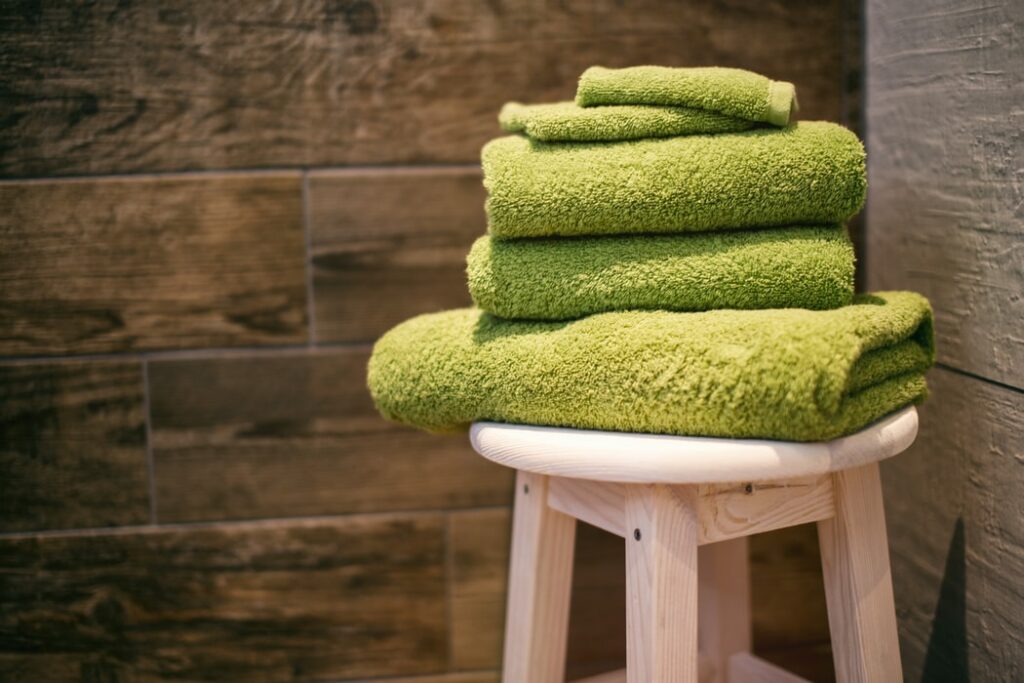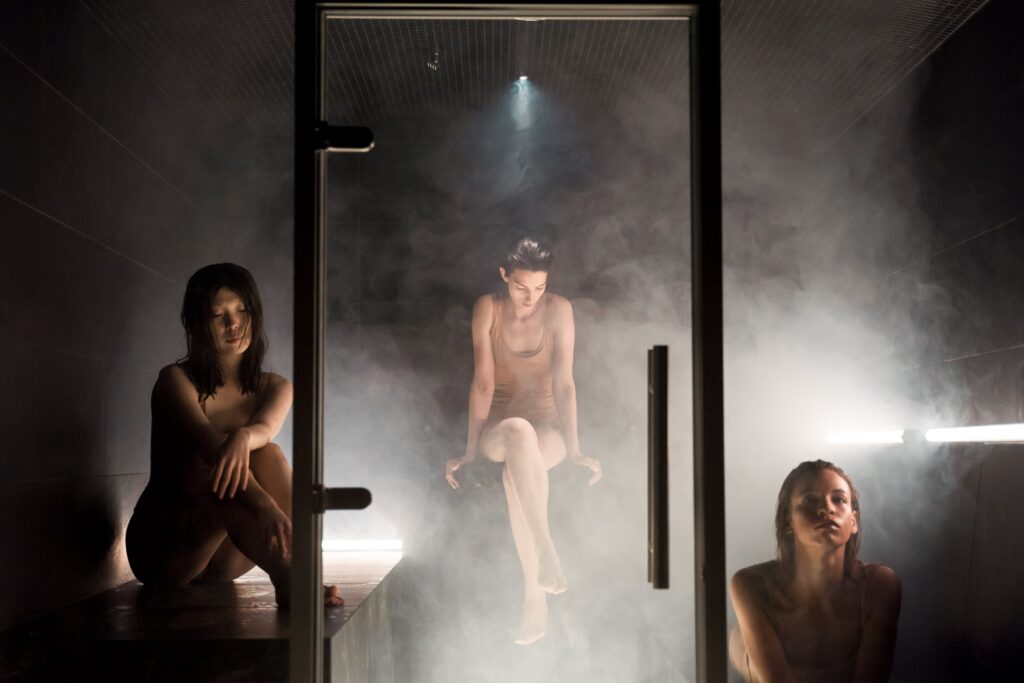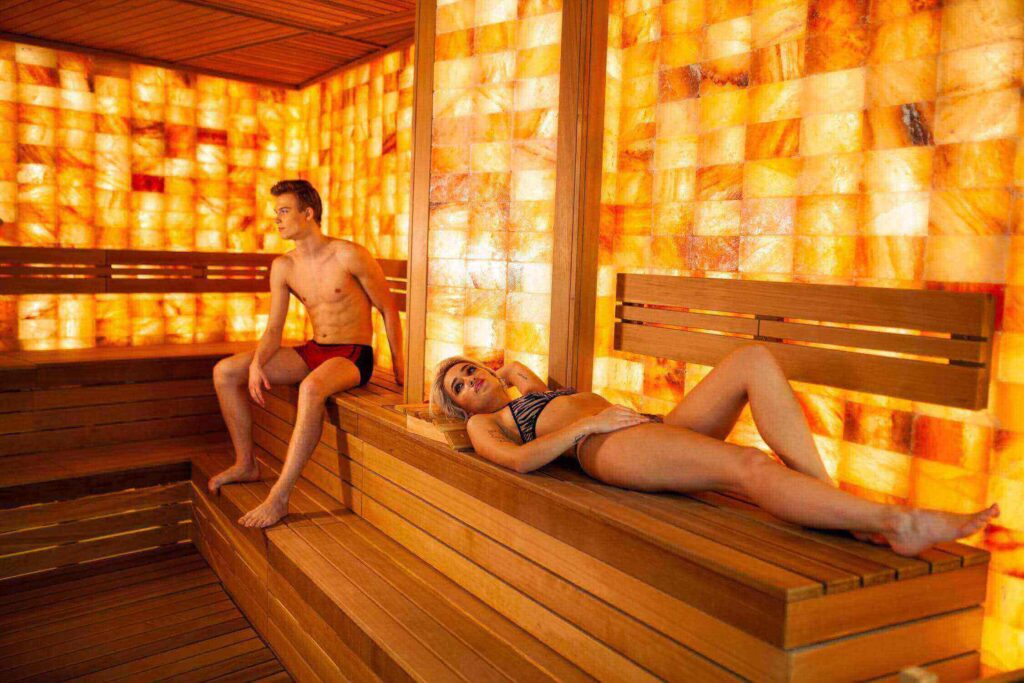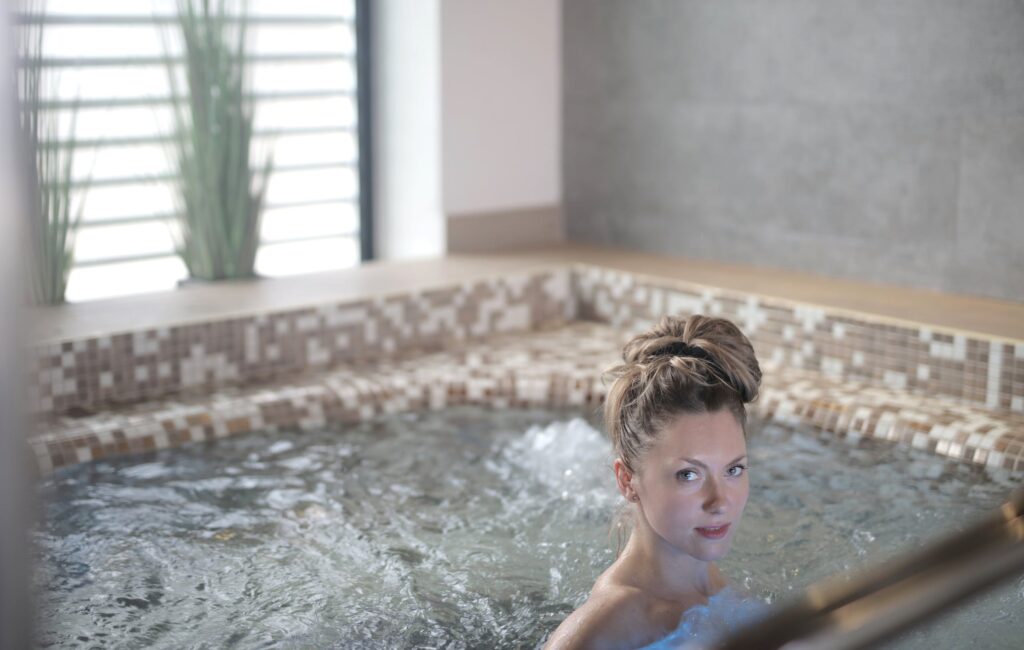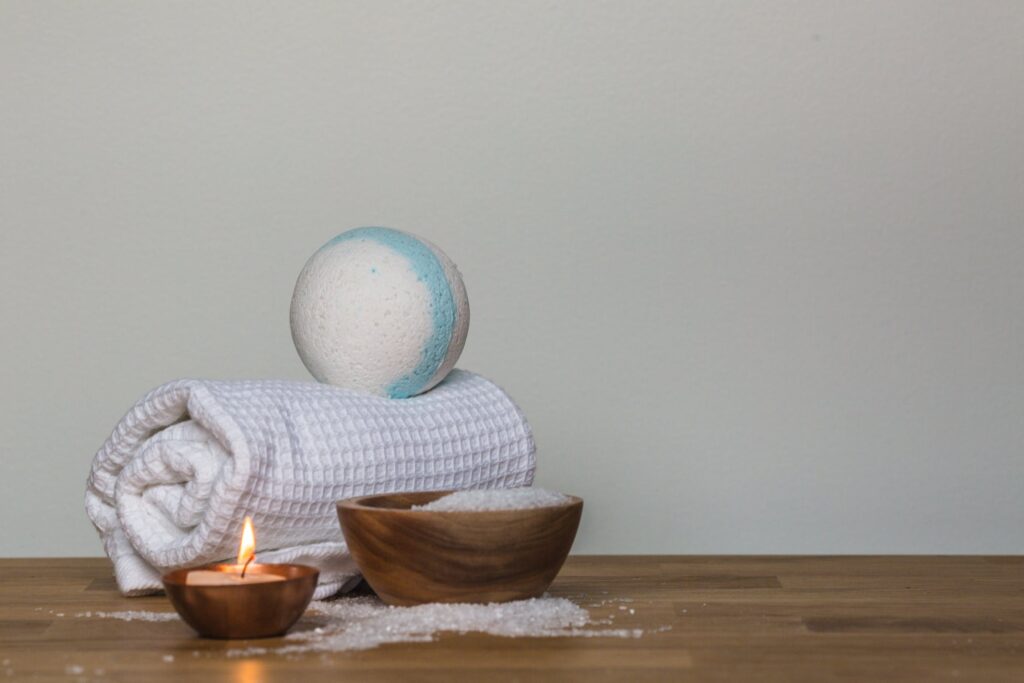Steam rooms and saunas are two different types of facilities. There is a great deal of misunderstanding on this topic, but the reality is that these are two quite different things. In contrast to steam rooms, which envelop your body in a cloud of hot steam, saunas are simply small rooms that are heated to extreme temperatures but do not have any steam or other form of additional moisture. Because of the potential for positive effects on one's health, it is important not to dismiss infrared saunas based just on the explanation of how they function.
A steam room is a chamber that is heated and used by individuals to relieve certain medical issues as well as for relaxing purposes. They are frequently discovered in fitness centres as well as spas.
A steam room is produced when a generator that is filled with water pumps steam into an isolated area. This creates an environment in which there is a significant amount of humidity in the air while people are seated in the room.
The temperature in a steam room is typically between 110 and 114 degrees Fahrenheit, and the humidity level is consistently one hundred per cent.
A sauna is a tiny room that is heated to temps between 65 and 90 degrees Celsius (150 and 195 degrees Fahrenheit). The interiors are often made of unpainted wood and feature temperature controls. Rocks have the ability to both retain and release heat, making them a potential component of the heating element in saunas. These rocks can be used to generate steam by pouring water over them.
There are some variations on the traditional sauna. For instance, traditional Finnish saunas tend to make use of dry heat, but traditional Turkish saunas tend to have a greater amount of wetness.
You might find that the most enjoyable part of your gym session is unwinding in a steamy sauna that smells like wood, or that you save the most enjoyable experience for when you're on vacation. Indulging in a sauna session can offer numerous health benefits, including alleviating minor aches and pains, regardless of how frequently or infrequently one participates in the experience.
FAQs About Sauna
Most Finns go to the sauna naked most of the time. If you are not Finnish, you may be more discreet and want to wear a bathing suit, a towel, or experience the authentic Finnish Sauna experience naked.
Thanks to the privacy of an at-home sauna, you can also choose to wear nothing while you soak up the heat. In terms of footwear, we recommend wearing shower shoes or sandals outside of the sauna, to protect yourself from slippery tiles. However, inside of the sauna you should never wear shoes.
First sauna session: stay in the sauna for about 8 to 10 minutes. But maximum as long as you feel good about it! In the sauna: Underlay towel so that your body does not come into contact with the wood. The higher up you sit in the sauna, the higher the temperature.
You might crave something salty post sauna session because you lost a good amount of sodium via sweating. Although tempting, don't reach for a bag of chips. Instead opt for foods that are nutrient dense like leafy greens, nuts, bananas or fruits high in water like pineapple or watermelon.
Contraindications to sauna bathing include unstable angina pectoris, recent myocardial infarction, and severe aortic stenosis. Sauna bathing is safe, however, for most people with coronary heart disease with stable angina pectoris or old myocardial infarction.
Steam Room vs. Saunas
Steam rooms and saunas are very comparable to one another. A sauna generates heat through the use of dry heat and is typically much hotter than a steam room. The temperature in steam rooms is often lower than that in saunas, which are typically maintained at temperatures ranging from 160 to 220 ℉. They are typically between 110 and 120 degrees Fahrenheit. Both advocate being seated in the warmth as a method of recuperation.
A sauna might help calm your weary muscles. In addition to this, it improves both circulation and heart health. On the other hand, the moisture that the steam contains may provide your body with additional benefits.
It's not uncommon to find saunas and steam rooms in spas and fitness centres. There are even some people who keep them in their own houses. In a traditional sauna, the space is heated with hot rocks, a stove, or an electric heater, and the walls are typically panelled in wood to retain the heat. In most cases, this indicates that it needs to be a unique space.
You may transform your bathroom into a temporary steam room by taking a hot shower and allowing the steam to fill the space while the shower is running.
Steam rooms are typically compact in size, airtight, and constructed from materials (such as tile, acrylic, or glass) that are able to handle the moist heat that is generated inside. They are heated by generators that produce steam from water that has been brought to a boil.
The temperature in steam rooms is typically maintained at about 110°F (43°C). They may feel much higher than saunas, which are kept around 150 and 195 degrees Fahrenheit (65 and 90 degrees Celsius), with a humidity rate of five to ten per cent, due to the high level of humidity that is present in these environments, which is typically around 100 per cent.
There are often a few different seat height options available in saunas and steam rooms. As a result of the fact that heat rises, the temp will be higher the higher up in the seat you are.
It is not unheard of to find a steam room and sauna coexisting in the same building as one in a health club. The use of dry heat in saunas and wet heat in steam rooms results in noticeable visual and textural differences between the two types of spaces. Both are great for relieving stress and offer a variety of health advantages. Which one you appreciate more may depend on factors such as your preferences and requirements.
How do Saunas work?
There are numerous varieties of saunas available. Some people use dry heat and keep a water pail and ladle nearby so that they can produce periodic bursts of steam. This method is based on the traditional Finnish technique. Some people don't use the water bucket and instead generate dry heat instead. Turkish saunas are also famous. These make use of wet heat and are functionally and aesthetically comparable to steam rooms.
There are several different ways that saunas can create heat. Among the many methods of heating are:
- Light sources emit infrared radiation. To heat only your body, as opposed to the entire room, an infrared sauna makes use of lights that emit electromagnetic radiation. The average temperature in an infrared sauna is about 140 degrees Fahrenheit (60 degrees Celsius), which is lower than the temperatures produced by other types of saunas.
- Wood. Burning wood is a standard way that is used to make embers or to heat pebbles used in saunas. It results in a low humidity level and dry heat. Every ten minutes or so, water might be scooped onto the rocks in order to inject short bursts of heat and humidity into the space.
- Electricity. The sauna rocks at the majority of fitness clubs and gyms are heated to an extremely high temperature by the use of electrical heaters. The resultant moisture and dry heat are identical to those produced by the method of burning wood.
- Steam. Saunas in the Turkish type generate wet warmth and high humidity by using steam from water that has been boiled. These kinds of establishments are also sometimes called Turkish bathhouses or steam rooms.
There are now two distinct categories of saunas in use. The infrared sauna is by far the most prevalent variety, but there is also the more traditional variety. In traditional saunas, the space is warmed by a fire that is fed with wood. In order to prevent eye irritation and smoke from entering the sauna, the fire needs to be topped with a chimney. This technique is able to treat dry heat successfully, but it also takes a very long time to heat up the room where the sauna is held. Depending on the dimensions of the room and the layout of the space itself, it could take an entire day at times.
Infrared heating is frequently used in place of traditional methods in contemporary saunas. It has two distinct applications that can be employed. The first and most popular use of infrared is to heat things up inside the sauna room itself. This is also the most common use. In most cases, specific rocks or charcoal are utilized and heated to extremely high temperatures before being positioned in the centre of one of the room's sides. The appropriate types of rocks will not break or show any signs of problems under this type of tension, but they will very readily heat up the entire space with dry heat. Rocks or charcoal are typically the fuels of choice in saunas, although other things certainly have their place.
The other application of infrared technology in saunas involves the use of infrared lamps to directly warm the bodies of the persons who are inside the sauna. This is a lot more contentious way, and it has not been recognized by as many sauna aficionados throughout the world as it has been by other methods, although it does have some proponents who argue that this method performs better than others.
Cedarwood or another type of premium hardwood is usually always used in the construction of saunas. Because the temps inside the room get too high to use tiles, metal, or plastic, the only option left is to utilize wood, which is able to absorb heat while keeping its surface temperature relatively unchanged. This is an important quality to have when working at temperatures that are 176 degrees Fahrenheit or higher.
The use of cedarwood in saunas results in the wood emitting a fragrant aroma, which is one of the benefits of the practice. In an old sauna house, the wood will have a potent odour even when the room has not yet been heated up, and this is one way to identify the building. The heat assists in bringing out the seductive smell of the cedar wood, which in turn brings about a complete state of relaxation for those who are within.
You won't need to worry about proper conduct in the sauna if you're fortunate enough to have one installed in your home. If, on the other hand, you're going to be using the sauna in a shared space with other people (like a fitness centre), there are certain crucial dos and don'ts that you need to follow. These are the following:
- Before entering the sauna, you should first freshen yourself with a quick shower after your workout.
- Enter and leave the building fast. The heat is contained within the sauna by its airtight construction. The door being opened causes heat to be released, hence doing it as quickly as possible is recommended.
- Take note of the clothing, or lack thereof, that the people within are wearing. In certain saunas, going nudist is quite fine. In some of these places, it is best to have a towel or swimsuit with you.
- It is never acceptable to sit on the bench's surface directly, regardless of whether or not you are naked. Be sure to bring a towel with you that you can sit on, and remember to pack it up before you leave.
- If there are other people in the sauna with you, avoid stretching out.
- Before adjusting the thermostat or pouring water onto the rocks in the sauna, you should first determine whether the temperature is too high or too cold for the majority of the people in the room. It is important to keep in mind that you may also customize the temperature to your taste by adjusting the elevation of your seat.
- Maintain a modest volume throughout your talk, and avoid engaging in any disruptive behaviour. The purpose of a sauna is to relax the body and mind.
- While you are in the sauna, you should not shave, tweeze, brush your hair, or engage in any other form of personal grooming.
- Band-aids and bobby pins are examples of items that should not be left behind as trash under any circumstances.
How To Use A Traditional Finnish Sauna
If you want to get the most out of a traditional Finnish sauna, the North American Sauna Society recommends scheduling a good amount of time for the experience. The following are the actions that they advise you to take:
- Before entering the sauna, make sure you hydrate yourself by drinking one to 2 cups of water and showering off.
- You can bring your body temperature up in a dry sauna for up to ten minutes without introducing any additional humidity.
- Exit the shower and take a second, shorter shower to finish becoming clean.
- Drinking something reviving, like water, will help your body maintain its temperature while it continues to cool down.
- Get back into the sauna for around another ten minutes of your time. In preparation for this second appointment, you can generate additional steam by pouring water over the sauna rocks in a ladle.
- You can also use a classic whisk that is made of tree twigs to beat the skin softly or massage it in a circular motion. In Finnish, this type of whisk is referred to as a vihta. It is frequently crafted from birch, oak, or eucalyptus wood. It is said that using a vihta can help alleviate the aches felt in muscles and soften the skin.
- After leaving the room, thoroughly wash your body and then drink some water to bring down your temperature.
- After what should be your final session of roughly ten minutes, you should re-enter the sauna.
- Relax and refresh yourself by swimming in a chilly outdoor pool or by rolling around in the snow. You also have the option of taking a shower in a chilly or cold indoor environment.
- Lay down and take it easy for as long as you feel it's necessary.
- At a minimum, finish one full glass of water and eat a snack that is low in fat and calories.
- Dress and leave the premises as soon as your body registers that it has reached its target temperature and has ceased perspiring.
Sauna Safety Tips
Whether you use a sauna in a public or private setting, there are many essential safety precautions that you should always observe and be informed of:
- In spite of the numerous health benefits they offer, saunas aren't necessarily for everyone. Before utilizing a sauna, you should discuss the possibility of doing so with your primary care physician, particularly if you suffer from uncontrolled high blood pressure, diabetes, heart problems, an irregular heart rhythm, or unstable angina. If you have any of these medical problems, you should not spend more than five minutes in the sauna at a time and ensure that you calm down gradually afterwards.
- Before utilizing a sauna, you should discuss your pregnancy or your plans to become pregnant with your primary care physician.
- Do not use a sauna if you are currently taking any medications that impair your body's natural capacity to regulate heat or if you are currently taking any medications that cause you to become sleepy.
- Don't use a sauna if you're unwell.
- To prevent being dehydrated when using a sauna, make sure you drink at least one full glass of fluids before entering and after leaving the room.
- Don't consume alcohol before, during, or after sauna use.
- Never use recreational drugs before, while you're in the sauna, or after you get out.
- It is not a good idea to consume a substantial meal before entering a sauna.
- According to the findings of an investigation that was presented in the American Journal of Public Health, healthy individuals should not spend more than ten to fifteen minutes at a time inside a sauna. If you have never been in a sauna before, it is important to pay attention to how your body reacts and to begin the experience cautiously (for no more than 5 to 10 minutes per session). Over the course of numerous visits, you will be able to increase your endurance for the heat.
- Never allow yourself to get sleepy when you're in a sauna.
- Leave the sauna if you begin to feel lightheaded or unwell.
- The traditional Finnish sauna experience typically concludes with an invigorating swim in ice-cold water. It's possible that this isn't the best option for everyone, particularly pregnant women, people with heart issues, and those with any number of other ailments. After using a sauna, it is recommended that you allow your body temperature to return to normal in order to avoid being dizzy gradually.
- The temp of the scrotum will temporarily increase when using a sauna. This does not mean that men are permitted to use the sauna as a birth control technique; the opposite is true. Unfortunately, regular sauna use may permanently lower your sperm count, so you should steer clear of saunas if you are trying to have a child with your spouse at the moment.
Health Benefits of Steam Rooms
The usage of steam baths is a very ancient practice that has been adopted by many different cultures across the world. For instance, the ancient Greeks and Romans enjoyed taking steam baths and visiting hot springs on a regular basis. The health practices of indigenous peoples also included the utilization of steam and sweating. The use of saunas and steam rooms for therapeutic purposes is widespread in Finland nowadays.
The sole purpose of people going to saunas is not to have fun. In spite of what you may have been led to believe, saunas have been shown to provide a number of significant health benefits. For instance, contrary to the claims of certain urban legends, spending time in a sauna will not assist you in shedding extra pounds or ridding your body of harmful toxins. However, they will help you relax, assist in lowering your blood pressure (at least momentarily), alleviate minor pains, and clear out your pores.
The most significant advantage gained from using a sauna is the reduction of stress. Your muscles are relaxed all the way through because the heat is able to reach all the way down into the tissue. In addition, it may assist in the relaxation of aches and pains that have been bothering you, which is an additional benefit that contributes to the reduction of stress.
When your blood vessels are subjected to dry heat, such as that seen in a sauna, they expand. When the blood arteries dilate, they remain expanded for some time afterwards, which results in an increase in the circulation of blood throughout the body. Even the more minute blood vessels will widen as a result, so it's not simply the larger blood vessels that will change. The reason that saunas are beneficial for your health is that they make your flow of blood more efficient, which in turn helps to lower your blood pressure.
Increased blood flow throughout the body is another factor that contributes to decreased levels of pain. It has been reported that those suffering from chronic diseases can get some momentary alleviation when they utilize a sauna. You will need to utilize the top-infrared sauna on many occasions each week in order to have the best pain alleviation.
Lastly, saunas help you sweat out impurities by opening your pores so that your entire body can do so. If you wash your face well after using the sauna to remove all of the perspiration, you may notice a modest improvement in your acne and blocked pores.
The health advantages of using a steam room are numerous. These are the following:
- Clearing congestion
- Easing bronchitis symptoms
- Workout recovery
- Lowering joint stiffness
- Improving skin health
- Lowering blood pressure
- Relaxation
- Improving circulation
Risks
People who use steam rooms should do so with care and be conscious of the dangers in doing so, despite the fact that there are many significant advantages to utilizing them.
Because of the heat, there is a possibility that the body will become dehydrated, thus, it is recommended that you do not spend more than fifteen to twenty minutes inside. Additionally, it is essential to consume a large amount of water in the hours leading up to the event.
In addition, the warm, moist environment of a steam room is perfect for the reproduction and dissemination of some types of bacteria and germs.
Athletes' feet and other types of fungal infections are two examples of the dangers that might arise from situations that are warm and humid. When going into a steam room, it is recommended that one brings a towel and either shower shoes or flip-flops with them.
Certain individuals are cautioned to stay away from steam rooms because of the intense heat that they generate:
- anyone with heart disease
- those with very low or high blood pressure
- pregnant women
- users of mind-altering drugs, such as stimulants, tranquillizers, or alcohol
- those taking antibiotics
- anyone with epilepsy
Conclusion
Steam rooms and saunas are two different types of facilities that offer various health benefits, such as alleviating minor aches and pains. Steam rooms and saunas are similar in that they generate heat through dry heat and are typically lower than saunas, but can provide additional benefits. Saunas are great for relieving stress and offer a variety of health advantages, but which one you prefer depends on your preferences and requirements. Infrared heating is used to heat things up inside the sauna room, while infrared lamps are used to directly warm the bodies of those inside. The use of cedarwood in saunas can help to bring out the seductive smell of the wood, but there are certain dos and don'ts to follow.
The purpose of a sauna is to relax the body and mind, so it is important to bring a towel and avoid stretching out. The North American Sauna Society recommends scheduling a good amount of time for a traditional Finnish sauna and taking precautions to ensure safety. Saunas are not for everyone, so it is important to discuss their health risks with your primary care physician and not use them if you are currently taking medications that impair your body's natural capacity to regulate heat or if you are unwell.
Content Summary
- Steam rooms and saunas are two different types of facilities.
- There are some variations on the traditional sauna.
- Steam Room vs. Saunas
- A sauna generates heat through the use of dry heat and is typically much hotter than a steam room.
- There are often a few different seat height options available in saunas and steam rooms.
- As a result of the fact that heat rises, the temp will be higher the higher up in the seat you are.
- It is not unheard of to find a steam room and sauna coexisting in the same building as one in a health club.
- The use of dry heat in saunas and wet heat in steam rooms results in noticeable visual and textural differences between the two types of spaces.
- In traditional saunas, the space is warmed by a fire that is fed with wood.
- The use of cedarwood in saunas results in the wood emitting a fragrant aroma, which is one of the benefits of the practice.
- These are the following:Before entering the sauna, you should first freshen yourself with a quick shower after your workout.
- Enter and leave the building fast.
- The heat is contained within the sauna by its airtight construction.
- In certain saunas, going nudist is quite fine.
- In some of these places, it is best to have a towel or swimsuit with you.
- Be sure to bring a towel with you that you can sit on, and remember to pack it up before you leave.
- If there are other people in the sauna with you, avoid stretching out.
- Before adjusting the thermostat or pouring water onto the rocks in the sauna, you should first determine whether the temperature is too high or too cold for the majority of the people in the room.
- The purpose of a sauna is to relax the body and mind.
- While you are in the sauna, you should not shave, tweeze, brush your hair, or engage in any other form of personal grooming.
- If you want to get the most out of a traditional Finnish sauna, the North American Sauna Society recommends scheduling a good amount of time for the experience.
- Get back into the sauna for around another ten minutes of your time.
- After leaving the room, thoroughly wash your body and then drink some water to bring down your temperature.
- Before utilizing a sauna, you should discuss your pregnancy or your plans to become pregnant with your primary care physician.
- Don't use a sauna if you're unwell.
- After using a sauna, it is recommended that you allow your body temperature to return to normal in order to avoid being dizzy gradually.


